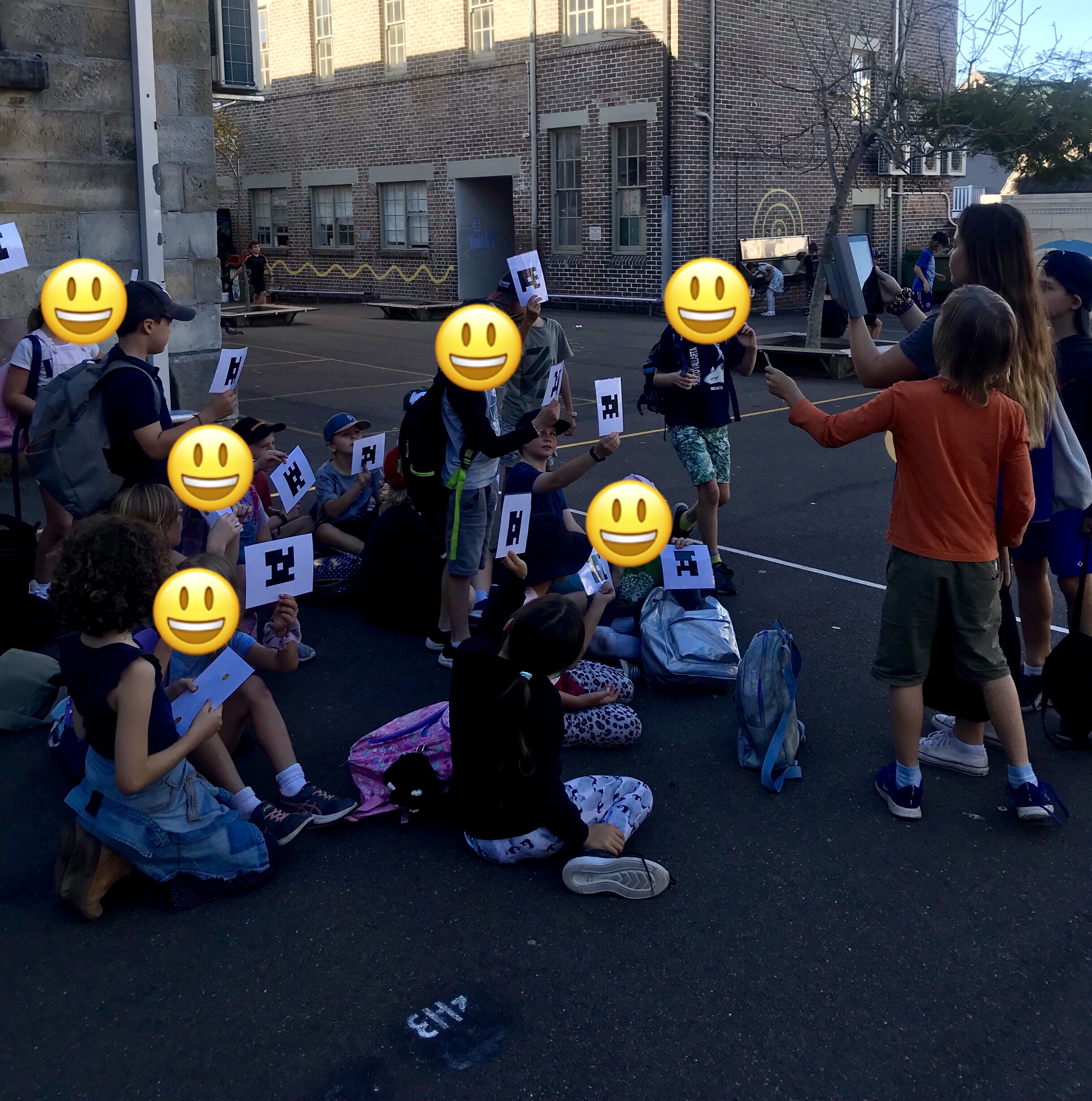Technological advances have caused a significant shift in all aspects of our lives, particularly in the way we learn and teach. Rouse (2016) defines augmented reality as ” the integration of digital information with the user’s environment in real-time”. While using a device, viewers can see images and information overlaid on top of their existing environment producing and interactive experience.

Research suggests one of the main advantages for implementing augmented reality (AR) into schools is to support student learning through active engagement. As a result of incorporating AR in the classroom teachers can expect to see student motivation and ambitions about learning increase (Almenara & Osuna, 2016).
Plickers

To explore augmented reality, I decided to try plickers. Plickers is an interactive tool that can be used as a quick and simple way to collect data. Each plicker card has a black and white image similar to a QR code and depending on which way a student holds the plicker image determines the response to a question.
To gather data I asked work colleagues and school students to respond to a question and share their responses by ‘voting’ on vacation care activities. At the end of each excursion i asked the children
“What did you think of today’s’ activity?“
Holding their cards high the children actively participated. I asked the same question each day to create consistency and anyone already familiar with the process was able to help and describe the ‘voting’ process to any new children. As a result of using plicker the children naturally became curious and motivated to share their thoughts as they were able to interact. While this was a fast and easy approach to collecting feedback it did not entirely capture student creativity. However, i believe there is potential for teachers to facilitate a creative way to use plickers.

What did you think of today’s’ activity?
A: Loved it – Do it again now
B: Liked it – Will do it again
C: Ok – Don’t care if we do it again
D: Don’t want to do I again
From this experience and through self reflection some considerations when using plicker in the classroom would be teacher preparation, student age and ability. In terms of teacher preparation, the time to form the questions online, to print and assign the cards to students. The students age and ability would also need to be considered as the writing on the cards was quite small. Additionally, for a student in kindergarten to understand the concept of holding a letter ‘backward’ may be confusing. Therefore, plenty of direct instruction is necessary, i also added emojis on the back of the cards to help the children identify their emotions using visual aids.
While it is widely acknowledged, augmented reality can serve several purposes in all levels of education, it is vital to recognise the implications it may bring. By using a variety of pedological approaches teachers should combine student-centred and teacher-centred approaches to introducing AR. At first, a teacher-centred approach may be required to present AR to the topic to the classroom then students can explore their own ideas to develop a deeper understanding. The effectiveness of AR to create successful learning is best when teachers and students can work together. However, teachers need to ensure that foundational knowledge and purpose of the chosen AR ultimately benefit student learning and learning outcomes.
In summary, augmented reality is an exceptional means for teaching and ensuring that successful and authentic learning occurs. As AR becomes more pervasive in education, concerns of privacy and security may increase, so it is essential to balance augmented reality with the real-world teaching to keep learning authentic.
References
Bower, M., Howe, C., McCredie, N., Robinson, A., & Grover, D. (2014). Augmented Reality in education – Cases, places and potentials. Educational Media International, 51(1), 1-15.
Rouse, M. (n.d). Augmented reality . Retrieved from https://whatis.techtarget.com/definition/augmented-reality-AR
Hi Courtney,
I really enjoyed your blog post on Plickers. I thoroughly enjoyed reading about your real-world example implementing Plickers in your practice at Vacation Care. I’m interested to know if any of your students experienced difficulty understanding the concept of Plickers or if they struggled understanding how the simple rotation of a card would change their answer. I absolutely agree that student age and ability may get in the way of successfully implementing this technology in the classroom. Having experience in Kindergarten, I know this technology would definitely not work with young children. They’d hold their card any old way and the results would not be a representative sample of the students thoughts and opinions. I think your addition of emoji’s on the back of the cards would be a useful visual aid for those students who may have forgotten what way to hold the card in order to show a certain thought or opinion, so thank you for sharing. Overall, a great read!
LikeLike